- Author: Brenda Dawson
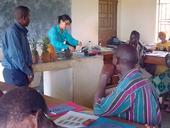
At the end of a long year, sometimes it helps to reconnect with what motivates your work.
For Karin Albornoz — a Ph.D. student who works in the Diane Beckles Lab at UC Davis on molecular biology related to tomato postharvest chilling injury — that means getting out into the world to work directly with small-scale farmers.
"I spend so much time in the lab," she said. "Sometimes I spend a whole day in the lab extracting RNA or writing a paper. This reminds me why I am doing this work: to make a real-world impact."
Just over a week ago, she returned from a trip to Uganda where she did exactly that. In partnership with a...
- Author: Brenda Dawson
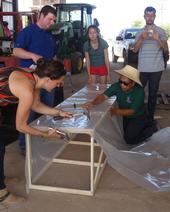
Planted in a corner of the UC Davis campus is a display of technologies and vegetable crops that researchers with the Horticulture Innovation Lab have been using with farmers in Africa, Asia and Central America. Led by UC ANR's Elizabeth Mitcham in the UC Davis Department of Plant Sciences, this program harnesses the agricultural expertise of a network of U.S. university researchers to improve how farmers in developing countries grow fruits and vegetables.
More often than not, the learning goes both ways: Adapting solutions for farmers on another continent can spark ideas that might be useful back home too.
So while the
- Author: Brenda Dawson
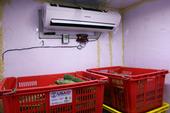
In many developing countries, more than half of all fruits and vegetables are never eaten, but instead are lost, damaged or spoiled after harvest. These “postharvest” losses can mean that farmers need to sell their fresh produce as soon as it is harvested for whatever price they can get, before they lose the crops that represent investments of labor, water, and agricultural inputs. Improving how fruits and vegetables are handled after harvest can significantly prolong freshness — and cooling is key.
“The three most important aspects of postharvest handling are: temperature, temperature, temperature,” said Michael Reid, UC Cooperative Extension...
- Author: Brenda Dawson
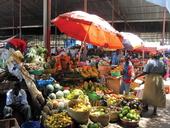
I'll admit that one of my favorite things to do on a hot day is to walk into an air-conditioned room. That burst of cool air in those first moments can be so refreshing.
It turns out I'm not alone — fruits and vegetables like to be cool on hot days too.
“Temperature management, or cold chain, is the single most important factor in maintaining postharvest quality in fruits and vegetables,” said Elizabeth Mitcham, UC Cooperative Extension specialist in the Department of Plant Sciences at UC Davis.
Controlling temperature helps regulate the aging process of a fruit, along with its water loss and microorganism growth. Storing fruits and vegetables at...
- Author: Pam Devine
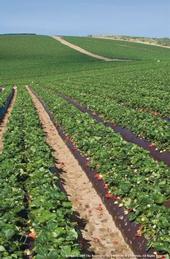
Postharvest technology. Hmmm. What does that even mean to you? Like most people, you’ve probably never thought about it, but it actually affects you every day. At least whenever you eat fruits and vegetables, and let’s face it, we all need to be eating more fruits and vegetables.
Working at the Postharvest Technology Center, I often think about how to spread our mission of how to reduce postharvest losses and improve the quality, safety and marketability of fresh horticultural products. Part of doing this is educating consumers about making good choices so they have a better experience eating fruits and vegetables. And, if consumers have a better experience with fruits and vegetables, we eat more of them....



